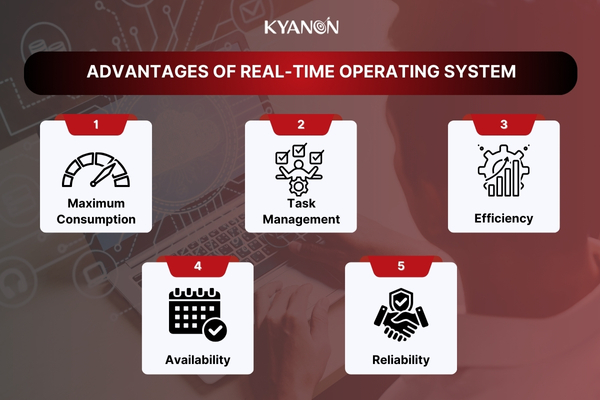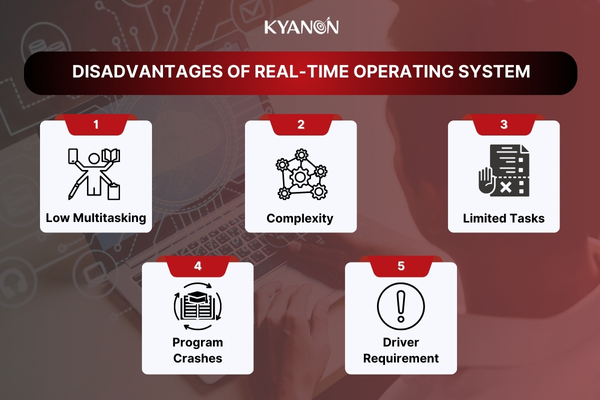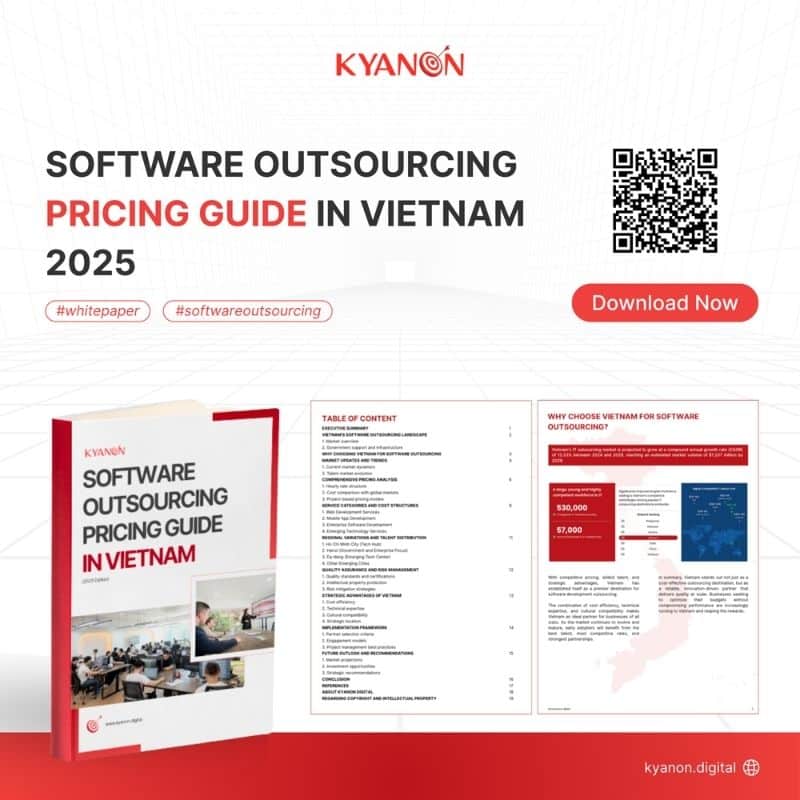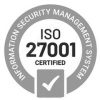Real-Time Operating Systems (RTOS) are like the secret sauce behind flawless, on-time performance in today’s fast-paced industries. In 2023, the global RTOS market hit USD 7 billion and is on track to grow nearly 8% yearly through 2032, fueled by booming automation in manufacturing, automotive, and IoT. Imagine if every critical task in your business was handled with perfect precision and incredible speed—no delays, no downtime, just seamless execution.

From healthcare and manufacturing to aerospace and telecommunications, RTOS is trusted to keep systems running smoothly, especially when every second counts. With the power of RTOS, your business can unlock new levels of productivity, reliability, and efficiency, handling complex operations with ease. Dive into the world of RTOS and discover how this technology can supercharge your processes and take your business to new heights of efficiency and performance!
1. What is real time operating system – RTOS?
Real-Time Operating System (RTOS) is a kind of system software that is designed for the purpose of performing different tasks simultaneously along with real time output. There is a set of applications where the operations are executed on time so the activities in an external system can be run in real time operating systems. The quantitative expression of time is used to analyze the system’s performance. Even if the system undergoes the same failure on different occasions, the results will stay the same.
2. Real-Time Operating System Types
At a given time, only a single task can be executed by a CPU. However, by switching tasks simultaneously, a real-time operating system creates an illusion of multiple program executions. Based on the type of execution, there are 2 types of real-time operating systems.
- A Hard RTOS is a system in which a single failure to meet the deadline may bring about complete or appalling system failure. It delivers results showing the exact execution time and exact output and results on the required time.
- On the other hand, a soft real-time system places less importance on time and accuracy. It is a system where one or more failures to meet the deadline are not considered complete system failure, but that performance is seen to be degraded.
Transform your ideas into reality with our services. Get started today!
Our team will contact you within 24 hours.
3. Advantages of Real-Time Operating System

- Maximum Consumption
RTOS allows maximum system consumption and ensures that the system consumes more resources while keeping all devices in an active state. As a result, a system using RTOS experiences little or no downtime. Besides, hosting companies can achieve maximum outputs while using RTOS
- Task Management
A real-time operating system typically takes a small amount of time to shift tasks. For instance, it takes about 10 microseconds to shift one task to another in older systems. But in the latest systems, it takes 3 microseconds. This type of faster task management ensures critical processes can be achieved on time.
- Efficiency
A real-time operating system pays attention to one application that is running at a given time. It usually keeps other applications residing in the waiting stage. Therefore, the critical tasks can be processed on time within the given deadline to achieve exact results on current execution work.
- Availability
RTOS is a system that is available 24/7 because it does less task shifting and gives maximum output. Hence, it can be best used for applications that need to perform always. Furthermore, an RTOS system has the ability to support different MCU platforms.
- Reliability
Real-time operating systems, especially those that are of hard RTOS are completely free of errors. It ensures a better way of handling errors. Besides, operating systems experience an issue known as jitter in which the amount of errors between subsequent loops is measured. If programmed correctly, an RTOS can be optimized in a way that it undergoes less amount of jitters.
4. Disadvantages of Real-Time Operating System

- Low Multitasking
Although an RTOS is capable of concentrating on targeted applications, they are designed to run only a few tasks and stay focused on them. Therefore, it is not recommended for systems that require multitasking due to poor thread priority.
- Complexity
Complex algorithms are behind an RTOS interface to achieve a desired output. For a normal user, it is difficult to write these algorithms, as only an expert developer can understand and write them.
- Limited Tasks
To satisfy the requirement of maintaining accuracy and reducing errors, an RTOS pays attention to one application at a given time. The low-priority tasks need to be on waiting. There is no time limit on how much time they will be on standby.
- Program Crashes
A real-time operating system can frequently experience program crashes. Unlike a regular O/S, an RTOS is not able to efficiently separate memory domains, which leads to difficulty for processes to address them.
- Driver Requirement
Signal interruptions continually happen in a real-time operating system. Hence, driver installation is required on the computer in order to achieve steady speed. Whenever there is an interruption, an RTOS will be able to respond fast to interrupts with the help of drivers.
The popularity of Real-Time Operating Systems has continuously increased for usage across all walks of life both at home and commercially. Kyanon Digital hopes this article will provide useful information so that when making a decision related to adopting a Real-Time Operating System, you can consider its benefits and limitations to make the best choices.
5. Find Your Fit: Selecting the Ideal RTOS for Your Company
Selecting the right Real-Time Operating System (RTOS) is crucial for your business to ensure smooth and efficient operations. Here are three key factors to consider:
5.1. Assessing Industry Needs
Start by understanding the specific requirements of your industry. Different sectors have unique demands when it comes to real-time processing and task management.
- Identify Critical Tasks: Determine which operations need immediate responses. For example, in manufacturing, automated machinery requires precise timing to function correctly.
- Performance Requirements: Assess the speed and reliability needed for your applications. High-stakes industries like healthcare and aerospace need RTOS that can handle complex, time-sensitive tasks without fail.
- Compliance Standards: Ensure the RTOS meets industry regulations and safety standards. This is especially important in sectors like automotive and medical devices where compliance is mandatory.
5.2. Compatibility with Existing Systems
Your chosen RTOS should seamlessly integrate with your current hardware and IoT networks to avoid costly upgrades and downtime.
- Hardware Integration: Check if the RTOS supports your existing hardware components. Compatibility ensures that your systems work together smoothly without needing extensive modifications.
- IoT Connectivity: As businesses increasingly adopt Internet of Things (IoT) devices, your RTOS should facilitate real-time communication between these devices and your main systems.
- Software Compatibility: Ensure the RTOS can work with your existing software applications and development tools. This minimizes disruptions and leverages your current technology investments.
5.3. Scalability and Flexibility
Choose an RTOS that can grow with your business and adapt to changing demands.
- Future-Proofing: Select an RTOS that can handle increasing workloads and more complex tasks as your business expands. This ensures long-term viability and reduces the need for frequent changes.
- Modular Design: A flexible RTOS allows you to add or remove features as needed. This adaptability helps you stay agile in a fast-paced market.
- Support and Updates: Opt for an RTOS with strong vendor support and regular updates. This guarantees that your system remains secure, efficient, and up-to-date with the latest technological advancements.
To Wrap Up
As your business grows and technology advances, selecting the right RTOS that aligns with your industry needs, integrates with existing systems, and offers scalability and flexibility will help you stay competitive and resilient. With the right RTOS in place, your business can unlock new levels of productivity, enhance customer satisfaction, and achieve lasting success in a connected world.
At Kyanon Digital, we specialize in helping businesses leverage the power of Real-Time Operating Systems to streamline operations and maximize efficiency. With our expertise in automation, and systems integration, we provide tailored RTOS solutions that fit your unique business needs.
Ready to elevate your business with the right RTOS? Contact Kyanon Digital today and let our experienced team guide you toward the perfect solution to transform your operations and future-proof your business.

















